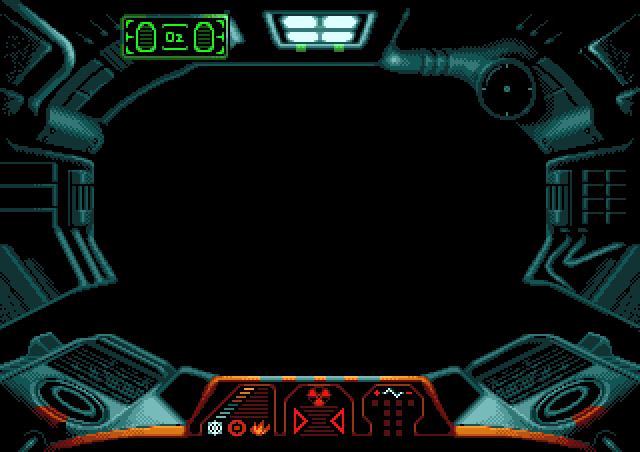
Animated
Animations were very memory intensive in the old days where computers only had 512KB or 1MB of memory in total.
Therefore artists had to cut corners and use tricks to convey the illusion of motion, often leading to only short clips and partially animated images.

Color Cycling
Color cycling is a method used to add simple animations to images without using individual frames.
Instead neighboring palette entries were swapped around, making it possible to change complete pixel groups.
The effect and its limitations can be best compared to the way that old advertisement billboards, made out of fluorescent tubes, worked.

Comparison
Many games were developed for multiple plattforms. The different technical capabilities of the individual machines led to interesting versions of the same image. Ranging from fewer or more colors, to completely different interpretations of the original motif.
The Atari ST was the Amiga's main competitor in the 16bit era. The main differences of the Atari ST were:
Maximum of 16 colors on screen at once.
Color palette only 9bit deep, 512 colors in total, versus 12bit and 4096 colors in total on the Amiga, resulting in rougher gradients and simpler hues.
Resolutions only available in NTSC (i.e. 200 or 400 lines per image)
You can switch between the plattforms by clicking on the "Amiga", "AtariST" buttons in the top right menu.

Copper
The Copper was a coprocessor of the Amiga's chipset that could be used to change video settings while the cpu was busy doing more important stuff.
It was often used to change the color registers for different rows of an image, allowing the Amiga to show more colors on screen at once than it was actually capable.
Being independent of the cpu made it possible to have these effects practically for free (i.e. without using up precious cpu time)

WIP
Watchin an artist create his image can be a very fascinating process.
It is very rare to find complete work-in-progress sequences. In most cases there are only final variations, images that got previewed in press releases or unfinished entries for demo scene competitions.